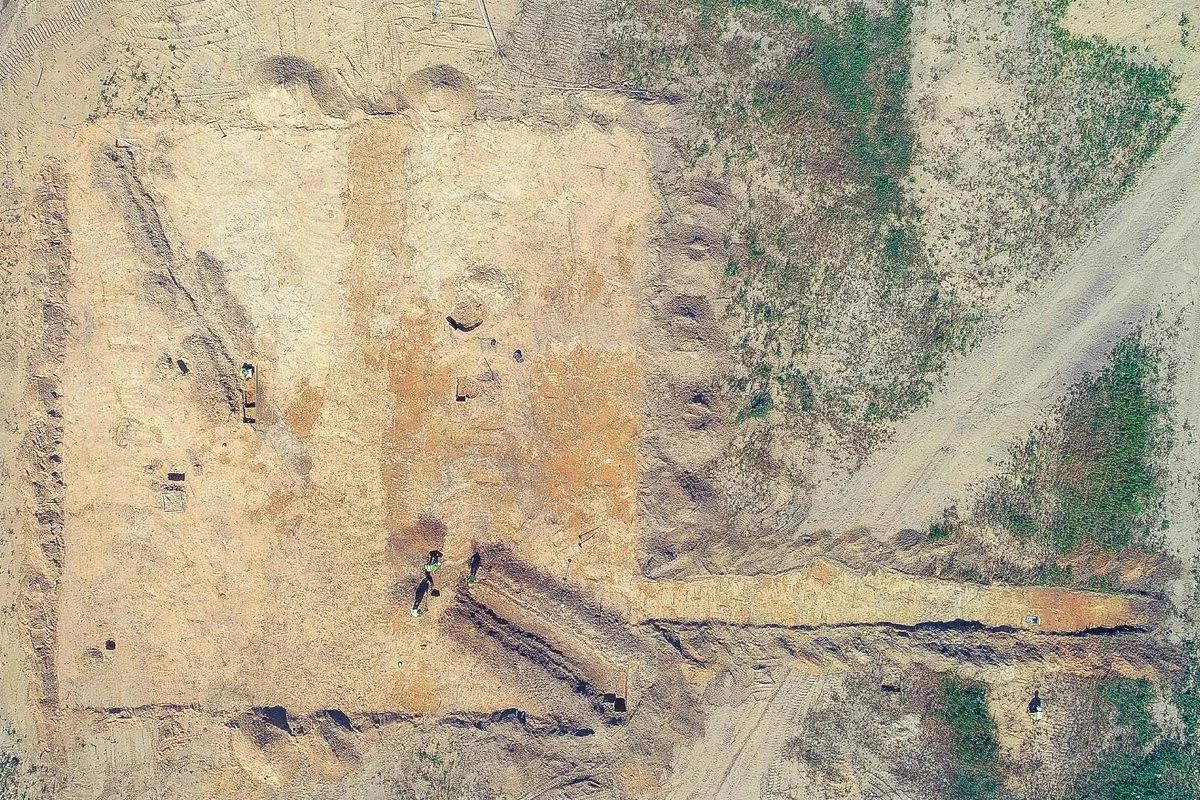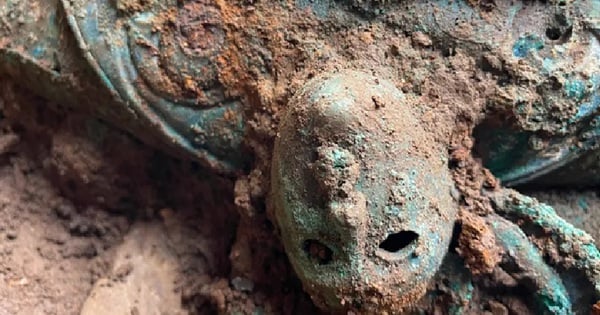(NLDO) - The highway project in Poland had to temporarily make way for archaeologists when two ancient settlements with a series of unique artifacts appeared.
In a press release published by Poland's State Roads and Highways Directorate (GDDKiA), the ancient settlement was discovered near the village of Jawiszowice in the Oświęcim district.

Excavation site of a settlement dating back approximately 4,000 years in Poland - Photo: GDDKiA
According to Heritage Daily, the first settlement is associated with the Lusatian culture, a Bronze Age and early Iron Age people who lived in Poland and parts of the Czech Republic, Solvakia, Germany and Ukraine from around 1100 to 400 BC.
Fragments of clay and flint vessels found here have helped to determine the age and culture to which the settlement belonged.
Just a few hundred metres away is an even older settlement associated with the Mierzanowice culture, an early Bronze Age people who inhabited parts of Slovakia and Poland from 2300 to 1800 BC.
At this settlement, which is approximately 4,000 years old, archaeologists have found traces of permanent structures, storage pits, a ditch and 34 flint artifacts.
Among them is a remarkable treasure: an intricate arrowhead made from Jurassic flint.
According to GDDKiA, due to archaeological discoveries, the contractor was forced to suspend work on this part of the S1 Highway construction site, which will pass right through the location of the two aforementioned residential areas.
The Polish government has decided to postpone the expected completion date of this highway by 223 days, from July 2024 to May 2025 to prioritize archaeological work.
Source: https://nld.com.vn/dao-duong-phat-hien-bau-vat-ky-jura-va-khu-dinh-cu-4000-tuoi-196240510110321415.htm


![[Photo] General Secretary To Lam receives Japanese Ambassador to Vietnam Ito Naoki](https://vstatic.vietnam.vn/vietnam/resource/IMAGE/2025/4/3/3a5d233bc09d4928ac9bfed97674be98)
![[Photo] Ho Chi Minh City speeds up sidewalk repair work before April 30 holiday](https://vstatic.vietnam.vn/vietnam/resource/IMAGE/2025/4/3/17f78833a36f4ba5a9bae215703da710)
![[Photo] Prime Minister Pham Minh Chinh chairs the first meeting of the Steering Committee on Regional and International Financial Centers](https://vstatic.vietnam.vn/vietnam/resource/IMAGE/2025/4/3/47dc687989d4479d95a1dce4466edd32)

![[Photo] A brief moment of rest for the rescue force of the Vietnam People's Army](https://vstatic.vietnam.vn/vietnam/resource/IMAGE/2025/4/3/a2c91fa05dc04293a4b64cfd27ed4dbe)
![[Photo] Prime Minister Pham Minh Chinh chairs meeting after US announces reciprocal tariffs](https://vstatic.vietnam.vn/vietnam/resource/IMAGE/2025/4/3/ee90a2786c0a45d7868de039cef4a712)








![[Video] Eliminate the "can't do it, ban it" mindset in science](https://vstatic.vietnam.vn/vietnam/resource/IMAGE/2025/4/3/1122c1ea9e244ddab1331a0597c60638)















































































Comment (0)